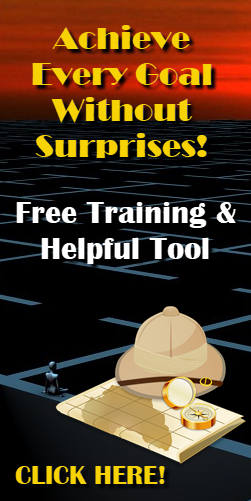Basic Webinar Techniques

 Sometimes having to sit through painful training is the best way to discover ways to improve my own training efforts. Maybe you are uncertain about creating training materials for other people.
Sometimes having to sit through painful training is the best way to discover ways to improve my own training efforts. Maybe you are uncertain about creating training materials for other people.
What if I could show you some tips and tricks that separate great training from the vast majority of materials that waste our time?
- Preview – Start the session exactly on time with a one-minute overview of what your attendees can expect. People listen differently when they know what to expect. Adults are easily distracted if you do not connect with them from the outset. Your webinar material must be organized and easy to follow if you want people to stay for the entire session.
- Outline – As you cover the material, you will want to follow a logical order that will ensure that your listeners can pay attention without unanswered questions or confused thoughts. Preparation is the key to including the right amount of detail for your audience. Additional detail can be provided in subsequent sessions or written materials posted on your website. Each webinar you offer should have a concise message that can be delivered in the time allotted.
- Review – Many of the questions that arise will be answered when you conduct a one minute review of what you said at the end of your primary training segment. This brief review cannot contain any new information that was not mentioned earlier.
- Announce – When you use multimedia presentations, an overview slide is helpful for people who are listening and looking at your screen. Your attention to this detail reminds your audience that you are prepared and following the plan. You can use a simple series of bullets that are easy to read and remember. Listeners want to know the purpose of your presentation because they can follow along without wondering what is coming up later.
- Hands-on – Your training session will be remembered for the applied exercises that you share with everyone. You can show attendees how to complete a task in just a few seconds when you use visual methods and narrate your actions. Training videos can be produced from your webinars if you include examples that answer questions and solve problems. This method is essential when you want your attendees to change how a task is performed.
- Quiz – Interactive methods where your audience members can respond to your questions will provide essential feedback about the current session. Your questions remind people to listen and respond. Some people offer prizes to maintain the attention level and add some excitement. Responses to your questions will indicate how well people are listening and absorbing the material.
- Involve – Multiple presenters offer different perspectives and experiences for your audience. Sometimes a participant has an example that can revolutionize your webinar. Your openness to stories from others can change the course of your business and allow people to know you better. Few people like a boring presentation without surprises and something entertaining that enhances their experience and creates a memory.
- Restate – Each time a question is asked, you will want to repeat the question so everyone knows what was asked. Your session will stay on pace when you can respond to questions, which might be common to multiple attendees. Saying the question again, even in different words, can add clarity and give you a few extra seconds to think of a good answer for your audience.
 Monitor – A webinar is not a formal sermon where one speaker retains control over the time and material. The questions asked can tell you more than you can imagine. Too many questions that ask you to go back and explain will indicate that you need to change your approach. Nothing is worse for listeners than a presenter who drones on without asking for feedback.
Monitor – A webinar is not a formal sermon where one speaker retains control over the time and material. The questions asked can tell you more than you can imagine. Too many questions that ask you to go back and explain will indicate that you need to change your approach. Nothing is worse for listeners than a presenter who drones on without asking for feedback.- Adjust – You will want to adjust your presentation speed and content based on the interaction you can encourage from your attendees. Sometimes, you will decide to eliminate some material for the sake of time. At other times, you will discover that your audience requires more detail to understand your training.
- Breaks – Webinars that are longer than an hour can be difficult for your attendees to finish. Hours of training cannot be absorbed in one setting. Consider the importance of taking frequent breaks and shortening your webinars. You will be heralded as a professional when you respect the time your attendees have spent with you. If you notice a number of people leaving your webinar, you will want to take note and shorten your next session.
- Feedback – All notes and comments about your session should be used as valuable input for your next round. Even the people who are less than tactful can aid in your quest to provide the best possible webinars in the future. The more feedback you receive, the better your training will be for the people who will attend a second time. As your reputation for listening spreads, you will become a sought after presenter.
Too many people strike out to conduct a webinar without any preparation at all. If you follow these 12 recommendations, you will save time and be thanked for being prepared and considerate of your audience. Every time you want to conduct a webinar, take the time to review these pointers during your preparation phase. Your listeners will become friends who respect your insight and guide your business to new heights.




